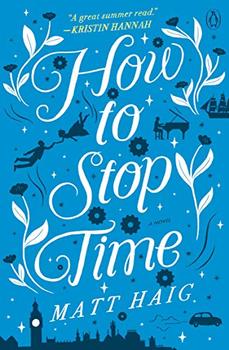Summary | Excerpt | Reviews | Beyond the Book | Read-Alikes | Genres & Themes | Author Bio

This article relates to How to Stop Time
In 1599, the early days of Tom Hazard's long life, his quasi-immortality results in a charge of witchcraft leveled against both himself and his mother, and he is forced to witness the harrowing ordeal of her trial. The belief in witchcraft was common in England at this time, upheld both by Queen Elizabeth I (1558-1603) and her successor King James 1 (1603-1625). This belief is evident in a number of plays from the period, most memorably in Shakespeare's Macbeth, in which the prophecies of the three witches drive the action. James I had a history of persecuting those believed to be witches, and even wrote a book about them called Daemonologie in 1597 when he was King of Scotland, though he grew to question these beliefs in his later years.
In How to Stop Time, Tom is pursued by a man he refers to as a "pricker," a reference to one of the ways the authorities "tested" for witchcraft. The pricker would poke the accused with a needle, as it was believed that "witch marks" on the skin could be pricked without producing blood. As the pricker was engaged in charlatanism, he would often use extremely dull needles or prick the accused in numerous places on the body until a spot was found that did not bleed. Any imperfection of the skin could be deemed a "witch mark" if the accuser was so inclined.
 Laws against witchcraft were passed in 1542 and 1563 during the reign of Elizabeth I, with further legislation enacted in 1604 during the reign of James I. The accused witch faced a trial in the criminal courts (earlier witchcraft cases were handled by the Church of England), and the punishment was death. There were roughly 2000 witch trials in England between the mid-16th century and the early 1700s, resulting in the execution of about 500 people. During trial, many were forced to undergo the swimming test, in which the accused would be thrown into a body of water. If the suspect sank, he/she was not a witch, if they floated, this was deemed a sign that the water had "rejected" them because they were unbaptized (and consequently evil). Obviously, many died by drowning during this ordeal.
Laws against witchcraft were passed in 1542 and 1563 during the reign of Elizabeth I, with further legislation enacted in 1604 during the reign of James I. The accused witch faced a trial in the criminal courts (earlier witchcraft cases were handled by the Church of England), and the punishment was death. There were roughly 2000 witch trials in England between the mid-16th century and the early 1700s, resulting in the execution of about 500 people. During trial, many were forced to undergo the swimming test, in which the accused would be thrown into a body of water. If the suspect sank, he/she was not a witch, if they floated, this was deemed a sign that the water had "rejected" them because they were unbaptized (and consequently evil). Obviously, many died by drowning during this ordeal.
One of the more famous witch trials in this era of British history is that of Elizabeth Stiles, an impoverished widow living in Windsor, accused by a local innkeeper of causing him to become ill. Once accused, she named three other women as accomplices, claiming they helped her create voodoo dolls. Dolls were of particular concern at this time, as three wax figures of Elizabeth I had recently been found in London, and it was believed they had also been created for nefarious purposes. All four women in the Stiles case were found guilty and hanged. Other famous cases include that of an entire family of supposed witches, the Samuels, found guilty and executed in 1593, and that of the Pendle witches, eight women and two men tried and executed in 1612.
Just like the later trials that took place in Salem, Massachusetts in America, the British witch trials were a result of mass hysteria and mob mentality, and overwhelmingly targeted marginalized individuals, including the poor, elderly, and mentally ill. The last witch trials in England were held in the early 18th century. In 1712, Queen Anne pardoned a woman sentenced to death for witchcraft, which served as a signal to the authorities that prosecution for such "crimes" should be ceased.
Illustration of witches at the court of James VI of Scotland, from Daemonologie
Filed under People, Eras & Events
![]() This "beyond the book article" relates to How to Stop Time. It originally ran in February 2018 and has been updated for the
June 2019 paperback edition.
Go to magazine.
This "beyond the book article" relates to How to Stop Time. It originally ran in February 2018 and has been updated for the
June 2019 paperback edition.
Go to magazine.
Don't join the book burners. Don't think you are going to conceal faults by concealing evidence that they ever ...
Click Here to find out who said this, as well as discovering other famous literary quotes!
Your guide toexceptional books
BookBrowse seeks out and recommends the best in contemporary fiction and nonfiction—books that not only engage and entertain but also deepen our understanding of ourselves and the world around us.